PD-1/PD-L1 interaction
Programmed death-1 (PD-1) is a receptor on T cells that has been shown to suppress activating signals from the T cell receptor when bound by either of its ligands, Programmed death-ligand 1 (PD-L1) or PD-L2. When PD-1 expressing T cells contact cells expressing its ligands, functional activities in response to antigenic stimuli, including proliferation, cytokine secretion, and cytotoxicity are reduced. PD-1/PD-Ligand interactions down regulate immune responses during resolution of an infection or tumor, or during the development of self tolerance.
Interference with the PD-1/PD-L1 interaction has also shown enhanced T cell activity in chronic infection systems. Chronic lymphocytic chorio meningitis virus infection of mice also exhibits improved virus clearance and restored immunity with blockade of PD-L1.
In addition to enhancing immunologic responses to chronic antigens, blockade of the PD-1/PD-L1 pathway has also been shown to enhance responses to vaccination, including therapeutic vaccination in the context of chronic infection.
Products for PD-1/PD-L1 interaction
- Cat.No. Product Name Information
-
GC50482
(D)-PPA 1
PD-1/PD-L1 interaction inhibitor

-
GC66337
Anti-Mouse PD-L1 Antibody
Anti-Mouse PD-L1 Antibody is an anti-mouse PD-L1 IgG2b antibody inhibitor derived from host Rat.
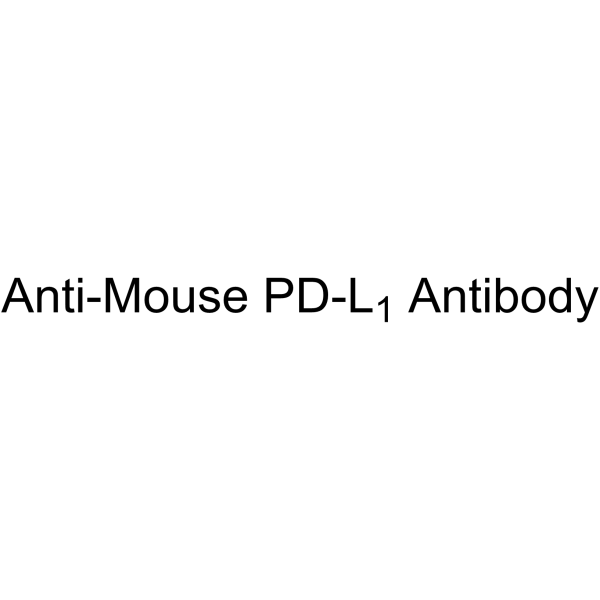
-
GC32704
Atezolizumab (MPDL3280A)
Atezolizumab (MPDL3280A) (MPDL3280A) is a selective humanized monoclonal IgG1 antibody against programmed death ligand 1 (PD-L1), used for cancer research.

-
GC31719
Avelumab (Anti-Human PD-L1, Human Antibody)
Avelumab (Anti-Human PD-L1, Human Antibody) is a fully human IgG1 anti-PD-L1 monoclonal antibody with potential antibody-dependent cell-mediated cytotoxicity.

-
GC25160
BMS-1001
BMS-1001 is a potent inhibitor of PD-1/PD-L1 interaction with EC50 of 253 nM. BMS-1001 alleviates the inhibitory effect of the soluble PD-L1 on the T-cell receptor-mediated activation of T-lymphocytes.
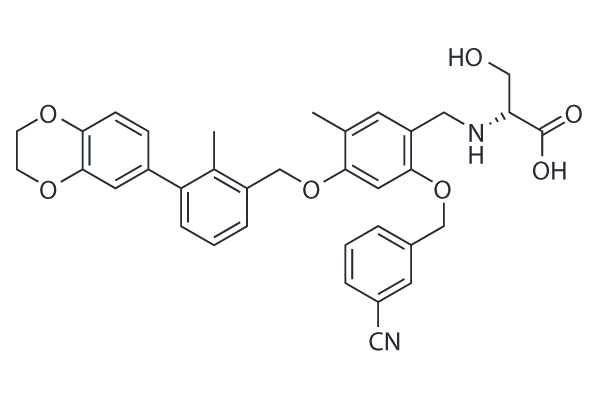
-
GC38740
BMS-1001 hydrochloride
BMS-1001 hydrochloride is an orally active human PD-L1/PD-1 immune checkpoint inhibitor.

-
GC31753
BMS-1166 (PD-1/PD-L1-IN1)
BMS-1166 (PD-1/PD-L1-IN1) is a potent PD-1/PD-L1 immune checkpoint inhibitor.
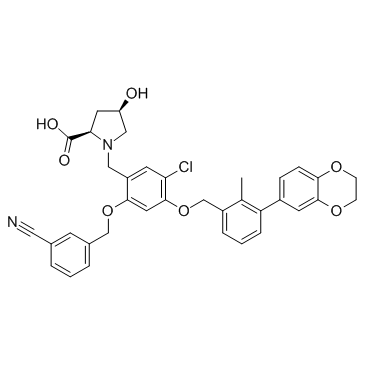
-
GC38131
BMS-1166 hydrochloride
BMS-1166 hydrochloride is a potent PD-1/PD-L1 immune checkpoint inhibitor.

-
GC62682
BMSpep-57 hydrochloride
BMSpep-57 hydrochloride is a potent and competitive macrocyclic peptide inhibitor of PD-1/PD-L1 interaction with an IC50 of 7.68?nM. BMSpep-57 hydrochloride binds to PD-L1 with Kds of 19 nM and 19.88 nM in MST and SPR assays, respectively. BMSpep-57 hydrochloride facilitates T cell function by in creasing IL-2 production in PBMCs.
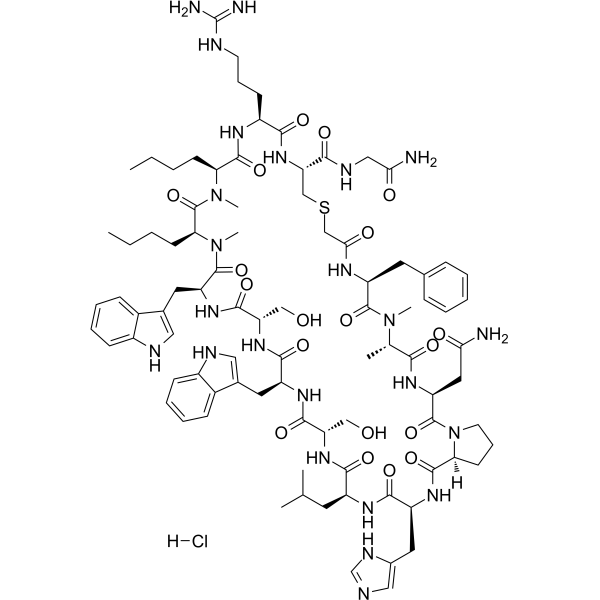
-
GC62253
Camrelizumab
Camrelizumab (SHR-1210) is a potent humanied high-affinity IgG4-κ monoclonal antibody (mAb) to PD-1. Camrelizumab?binds PD-1 at a high affinity of 3 nM and inhibits the binding interaction of PD-1 and PD-L1 with an IC50 of 0.70 nM. Camrelizumab acts as?anti-PD-1/PD-L1 agent and can be used for cancer research, including NSCLC, ESCC, Hodgkin lymphoma, and advanced HCC et,al.

-
GC35913
Durvalumab
A humanized anti-PD-L1 monoclonal antibody

-
GC66344
Envafolimab
Envafolimab (ASC 22; KN 035) is a recombinant protein of a humanized single-domain anti- PD-L1 antibody. Envafolimab is created by a fusion of the of anti-PD-L1 domain with Fc fragment of human IgG1 antibody. Envafolimab blocks interaction between PD-L1 and PD-1 with an IC50 value of 5.25nm. Envafolimab shows antitumor activity. Envafolimab has the potential for the research of solid tumors.

-
GC38044
Fraxinellone
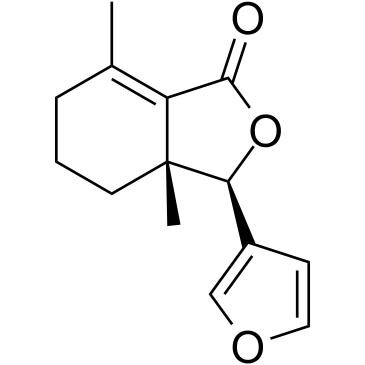
-
GC68404
Human PD-L1 inhibitor IV
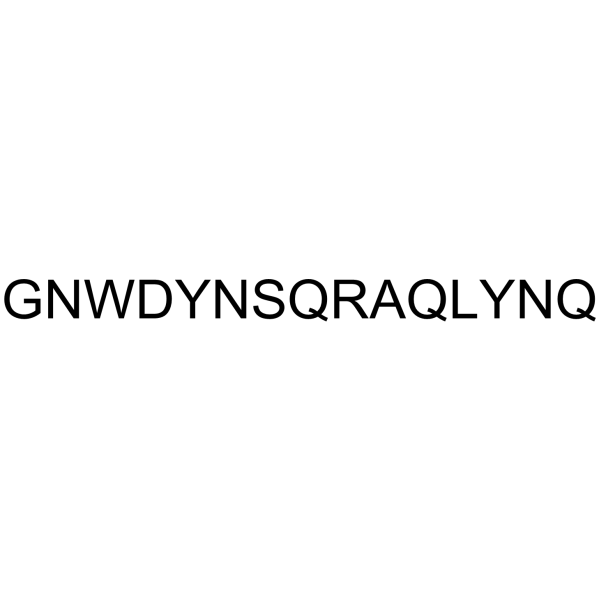
-
GC69677
MAX-10181
MAX-10181 (PD-1/PD-L1-IN-30) is a PD-1/PD-L1 binding inhibitor with an IC50 value of 0.018 μM. MAX-10181 can be used for research on cancer and other related diseases.
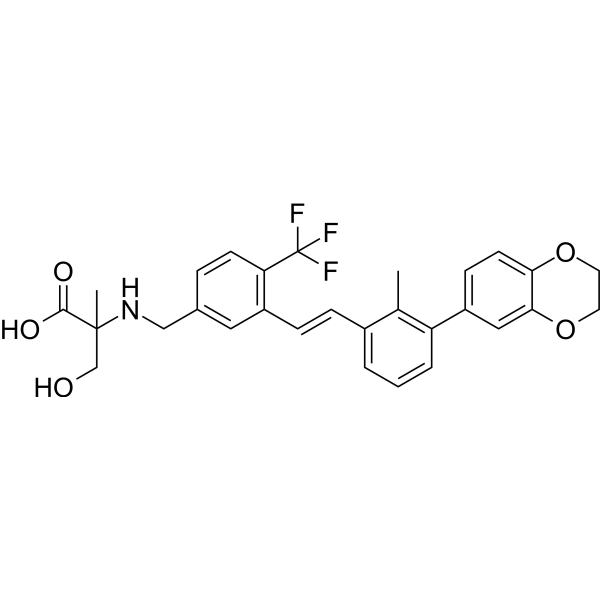
-
GC34218
Nivolumab (BMS-936558)
Nivolumab (BMS-936558) is a programmed death receptor-1 (PD-1) blocking human IgG4 antibody to treat advanced (metastatic) non-small cell lung cancer.

-
GC36767
NP-12
NP-12 (NP-12) is a peptide antagonist of the PD-1 signaling pathway, displays equipotent antagonism toward PD-L1 and PD-L2 in rescue of lymphocyte proliferation and effector functions. NP-12 exhibits immune activation, excellent antitumor activity, and potential for better management of immune-related adverse events (irAEs).
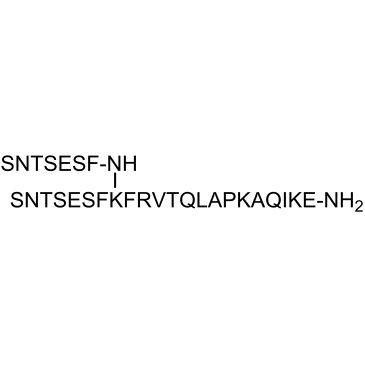
-
GC36768
NP-12 (TFA)
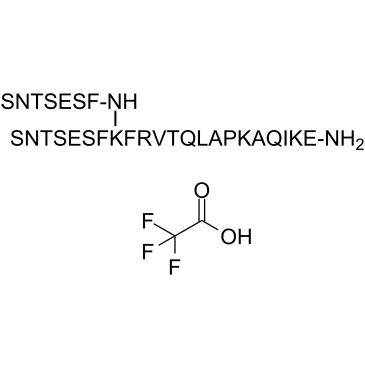
-
GC65266
Onvatilimab
Onvatilimab (JNJ-61610588) is a human IgG1κ anti-VISTA (V-domain Ig Suppressor of T-cell Activation) monoclonal antibody. Onvatilimab has an anti-tumor activity.

-
GC19225
PD-1-IN-1 (CA-170)
PD-1-IN-1 (CA-170) is an orally delivered dual inhibitor of VISTA and PD-L1.
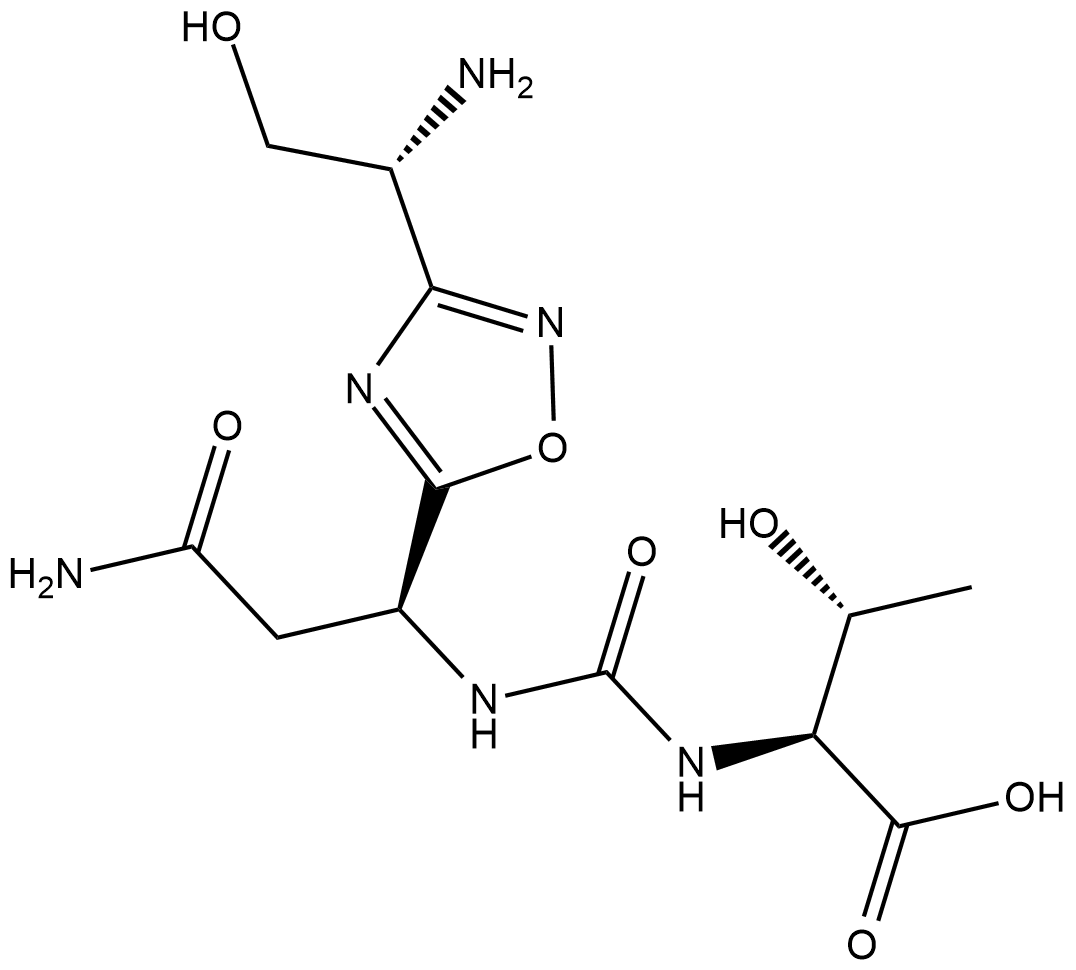
-
GC34928
PD-1-IN-17
An inhibitor of PD-1 signaling
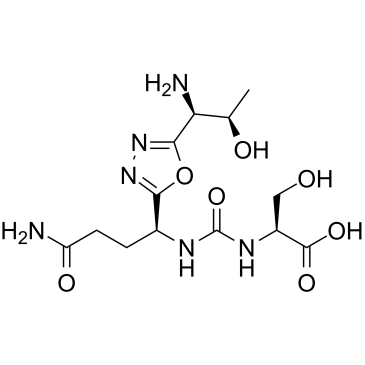
-
GC34929
PD-1-IN-17 TFA
PD-1-IN-17 TFA is a programmed cell death-1 (PD-1) inhibitor extracted from patent WO2015033301A1, Compound 12, inhibits 92% splenocyte proliferation at 100 nM.

-
GC36862
PD-1-IN-22
PD-1-IN-22 is a potent programmed cell death-1 (PD-1)/programmed cell death-ligand 1 (PD-L1) interaction inhibitor with an IC50 of 92.3 nM.
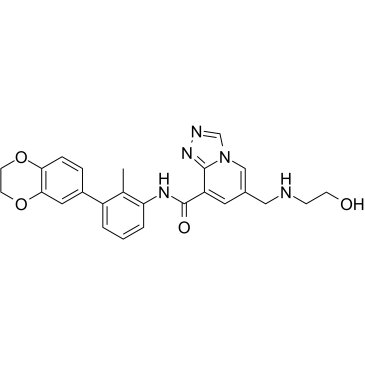
-
GC63517
PD-1-IN-24
PD-1-IN-24 (compound 1) is an orally active PD-1 inhibitor.
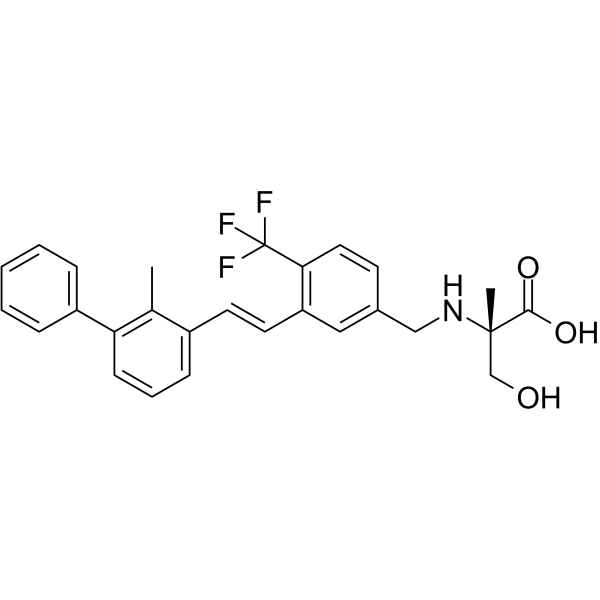
-
GC15142
PD-1/PD-L1 inhibitor 1 (BMS-1)
PD-1/PD-L1 inhibitor 1 (BMS-1) is an inhibitor of the PD-1/PD-L1 protein/protein interaction (IC50 between 6 and 100 nM).
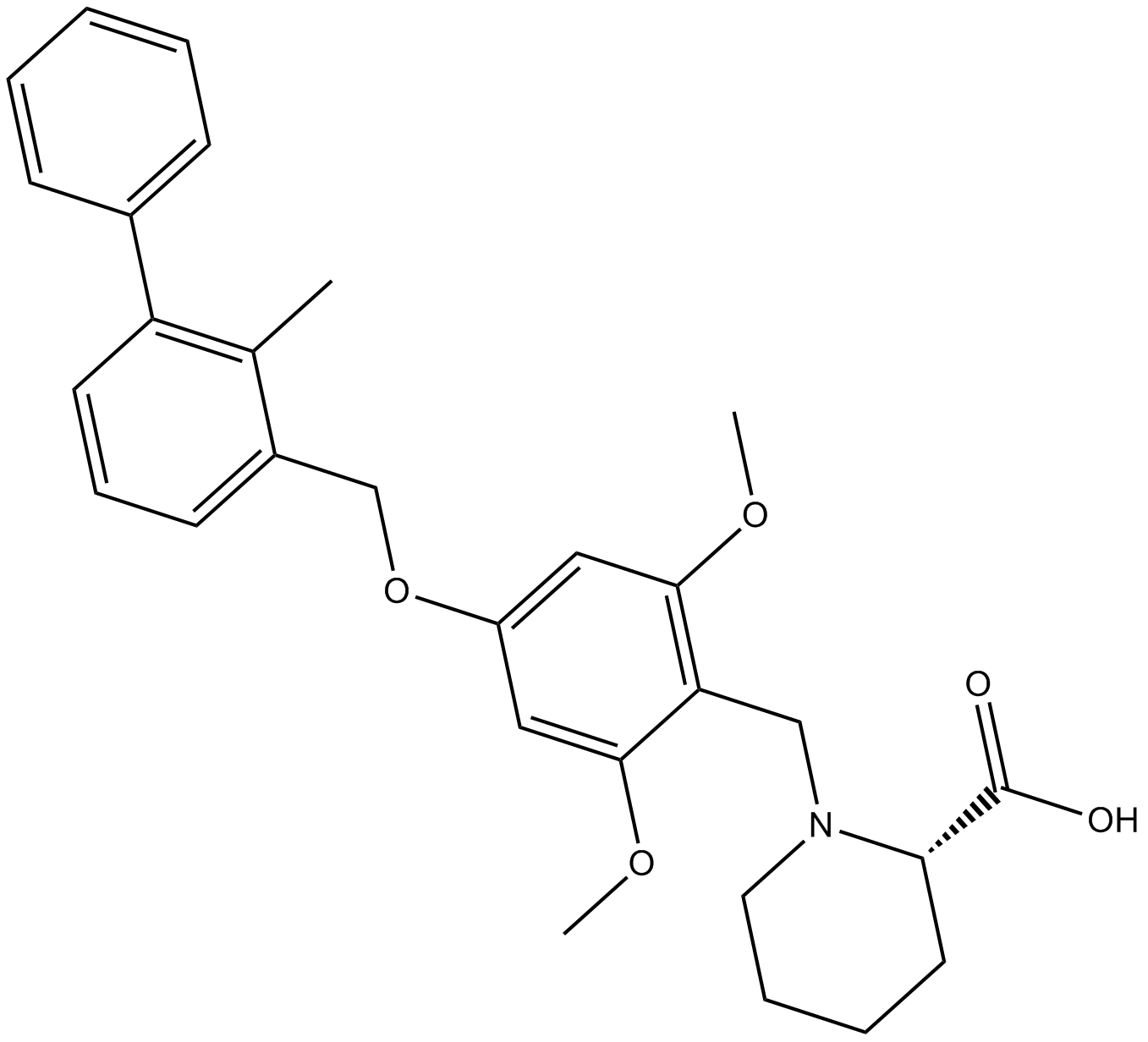
-
GC16762
PD-1/PD-L1 inhibitor 2
PD-1/PD-L1 inhibitor 2 is a potent and nonpeptidic PD-1/PD-L1 complex inhibitor with an IC50 of 18 nM and a KD of 8 μM. PD-1/PD-L1 inhibitor 2 binds to PD-L1 and blocks human PD-1/PD-L1 interaction. PD-1/PD-L1 inhibitor 2 has antitumor activity.
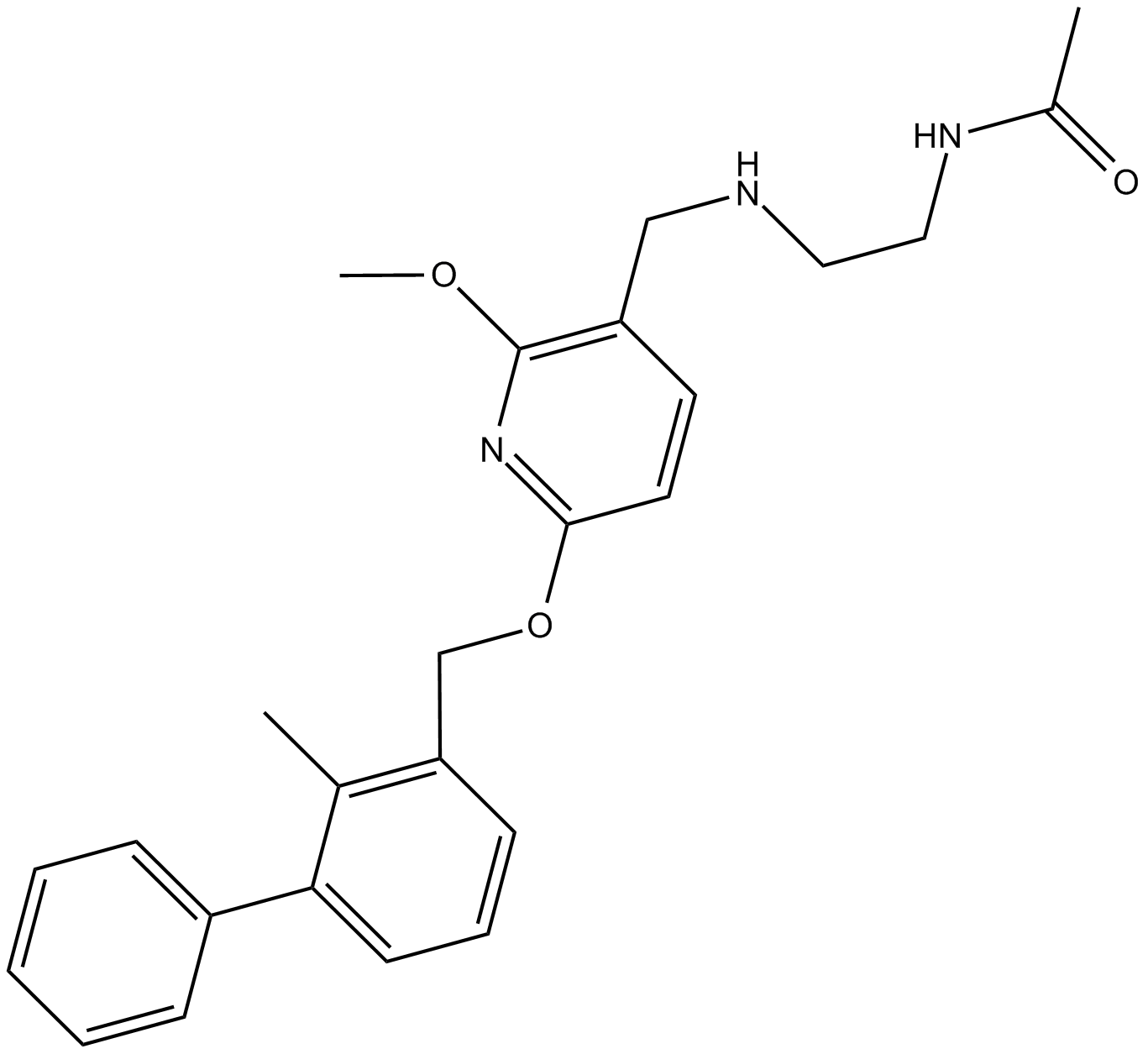
-
GC16258
PD-1/PD-L1 Inhibitor 3
PD-1/PD-L1 Inhibitor 3, a macrocyclic peptide, is a potent and selective inhibitor of the PD-1/PD-L1 and CD80/PD-L1 interactions extracted from patent WO2014151634A1, compound No.1. PD-1/PD-L1 Inhibitor 3 interferes with PD-L1 binding to PD-1 and CD80 by binding to PD-L1, with IC50s of 5.60 nM and 7.04 nM, respectively. PD-1/PD-L1 Inhibitor 3 can be used for the research of various diseases, including cancer and infectious diseases.
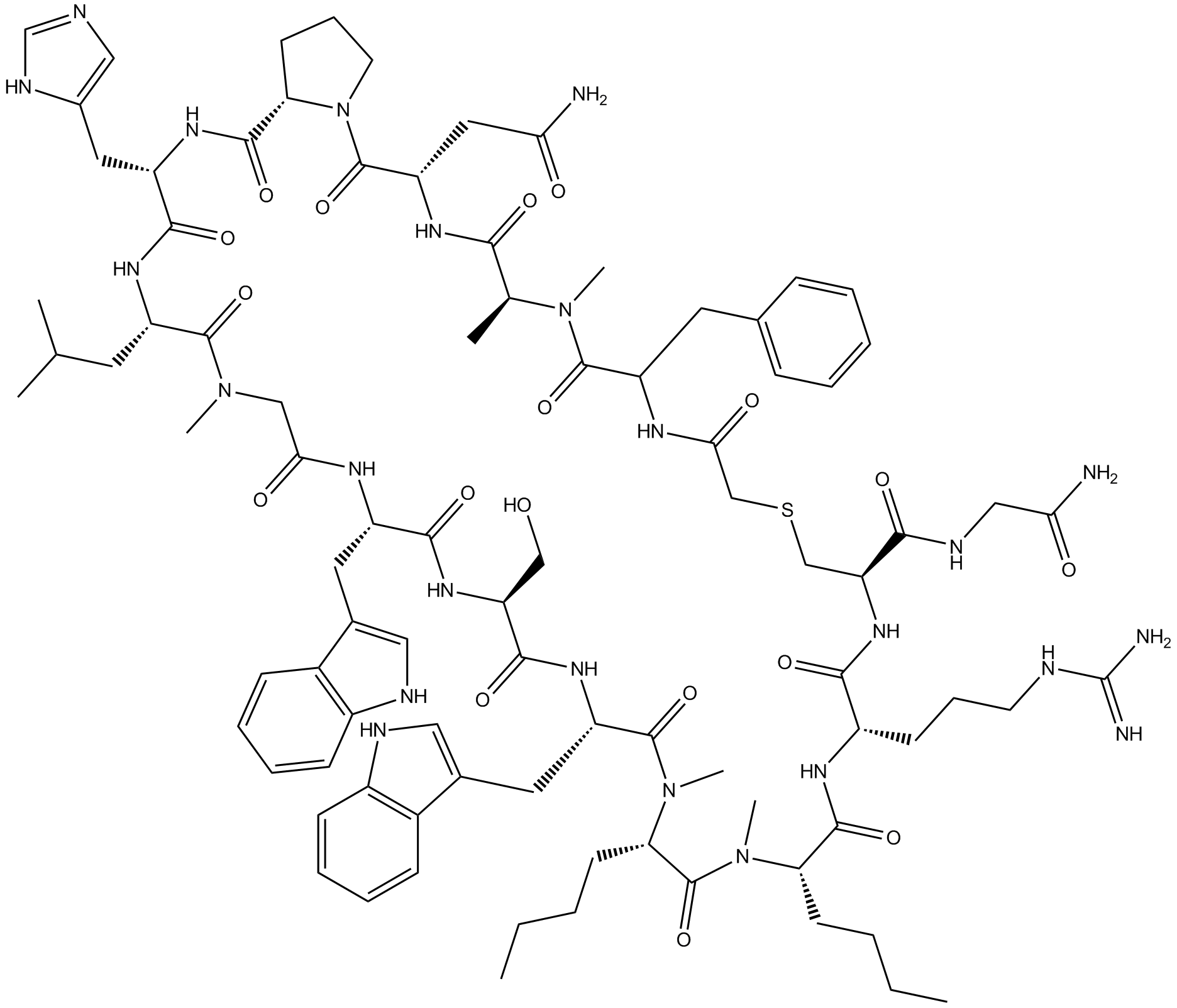
-
GC65071
PD-1/PD-L1-IN 3 TFA
PD-1/PD-L1-IN 3 TFA, a macrocyclic peptide, is a potent and selective inhibitor of the PD-1/PD-L1 and CD80/PD-L1 interactions extracted from patent WO2014151634A1, compound No.1. PD-1/PD-L1-IN 3 TFA interferes with PD-L1 binding to PD-1 and CD80 by binding to PD-L1, with IC50s of 5.60 nM and 7.04 nM, respectively. PD-1/PD-L1-IN 3 TFA can be used for the research of various diseases, including cancer and infectious diseases.

-
GC62658
PD-1/PD-L1-IN 7
PD-1/PD-L1-IN 7 (PD-1/PD-L1-IN 7) is a human PD-1/PD-L1 protein/protein interaction inhibitor with an IC50 of 0.213 nM.
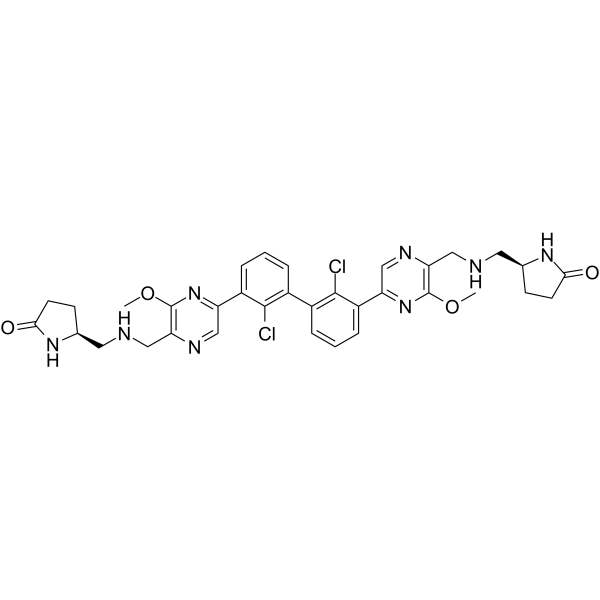
-
GC62125
PD-1/PD-L1-IN-10
PD-1/PD-L1-IN-10 (compound B2) is an orally active PD-1/PD-L1 inhibitor (IC50 of 2.7 nM) with potent anticancer efficacy.

-
GC69673
PD-1/PD-L1-IN-13
PD-1/PD-L1-IN-13 (Compound 43) is an effective immune checkpoint PD-1/PD-L1 inhibitor, with an IC50 value of 10.2 nM for the interaction between PD-1/PD-L1. PD-1/PD-L1-IN-13 promotes CD8+ T cell activation and delays tumor growth in Hepa1-6 mouse models.
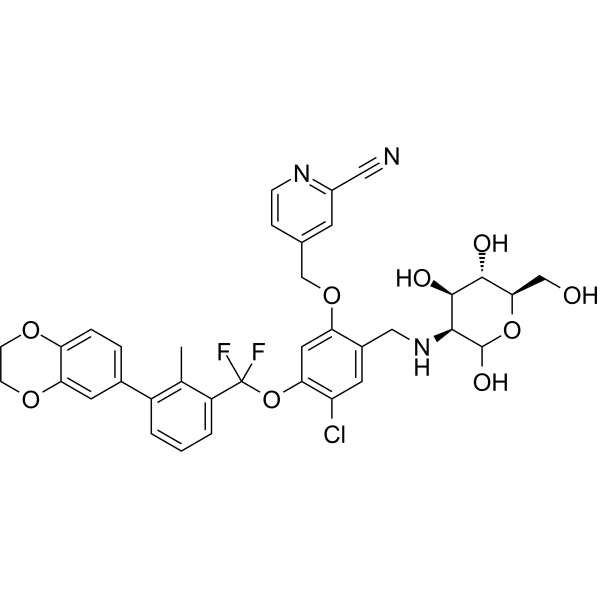
-
GC69674
PD-1/PD-L1-IN-14
PD-1/PD-L1-IN-14 (compound 17) is an inhibitor of the interaction between PD-1 and PD-L1, with an IC50 value of 27.8 nM. PD-1/PD-L1-IN-14 (compound 17) inhibits the interaction between PD-1 and PD-L1, promotes dimerization, endocytosis, and degradation of PD-L1.
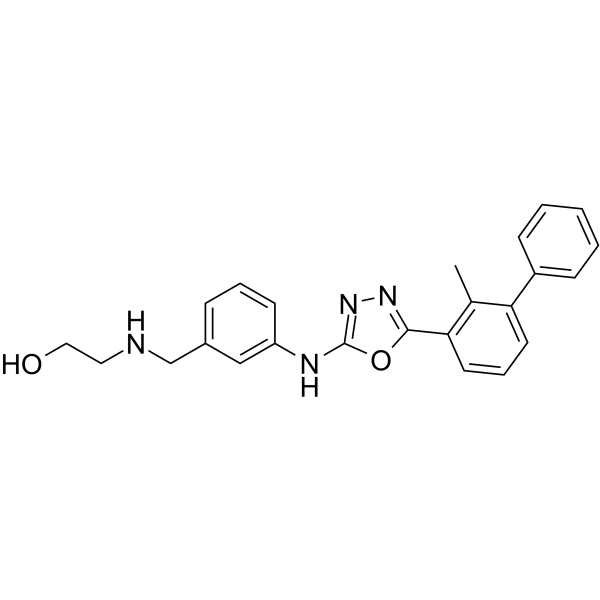
-
GC64855
PD-1/PD-L1-IN-23
PD-1/PD-L1-IN-23 is a potent and orally active inhibitor of PD-1/PD-L1. PD-1/PD-L1-IN-23 is an ester prodrug of L7. L7 is a benzo[c][1,2,5]oxadiazole derivative and biologically evaluated as inhibitors of PD-L1. PD-1/PD-L1-IN-23 displays significant antitumor effects in tumor models of syngeneic and PD-L1 humanized mice.
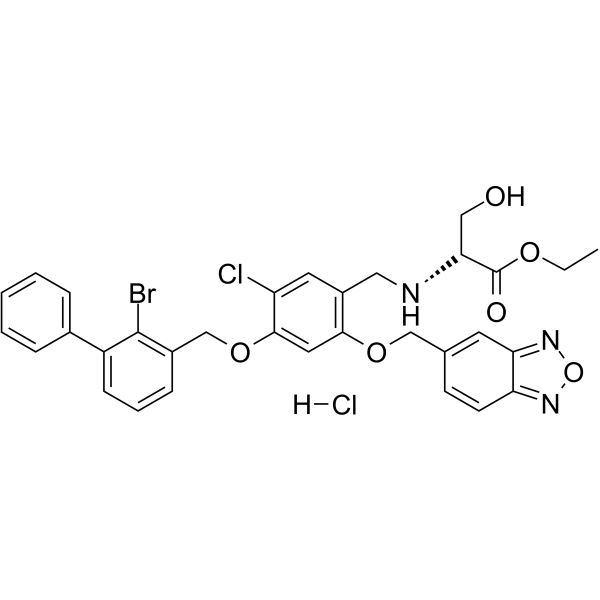
-
GC69676
PD-1/PD-L1-IN-29
PD-1/PD-L1-IN-29 (S4-1) is an effective PD-1/PD-L1 inhibitor with an IC50 value of 6.1 nM. PD-1/PD-L1-IN-29 can bind to PD-L1 and disrupt the interaction between PD-1 and PD-L1, inducing dimerization and internalization of PD-L1, improving its localization in the endoplasmic reticulum, and promoting entry into the endoplasmic reticulum. PD- 1/PD-LI-IN -29 has anti-cancer activity.
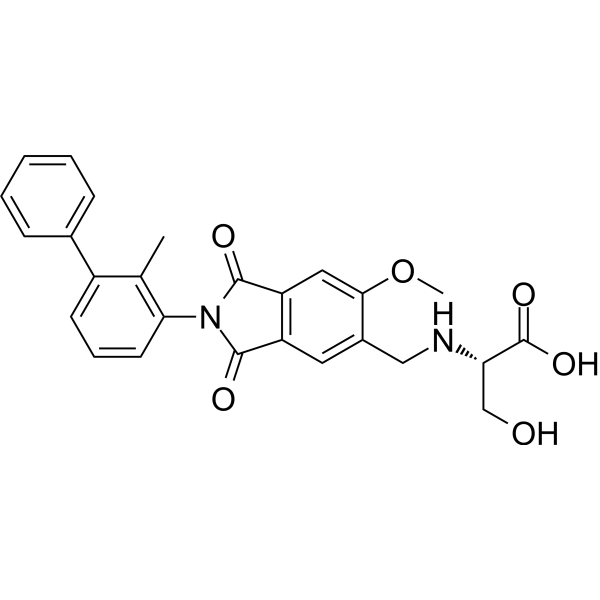
-
GC62688
PD-1/PD-L1-IN-8
PD-1/PD-L1-IN-8 (PD-1/PD-L1-IN-8; example 24) is a PD-1/PD-L1 inhibitor, with an IC50 <= 10 nM.
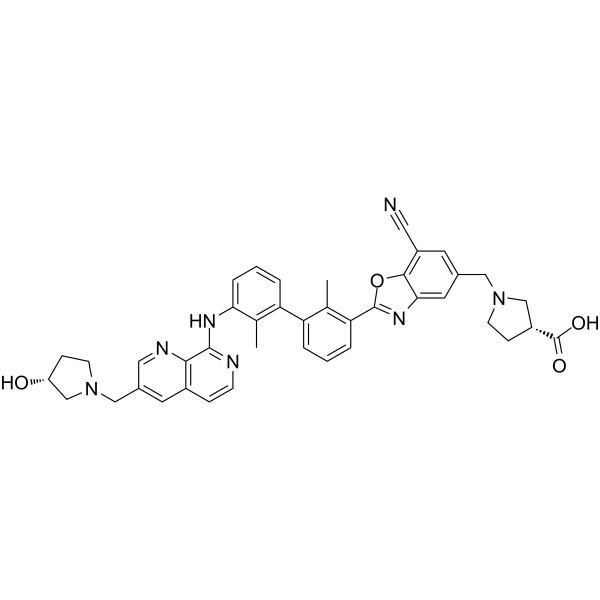
-
GC62387
PD-1/PD-L1-IN-9
PD-1/PD-L1-IN-9 is a potent and orally active inhibitor of PD-1/PD-L1 interaction, with an IC50 of 3.8 nM. PD-1/PD-L1-IN-9 can enhance the killing activity of tumor cells by immune cells. PD-1/PD-L1-IN-9 also exhibits significant in vivo antitumor activity in a CT26 mouse model.
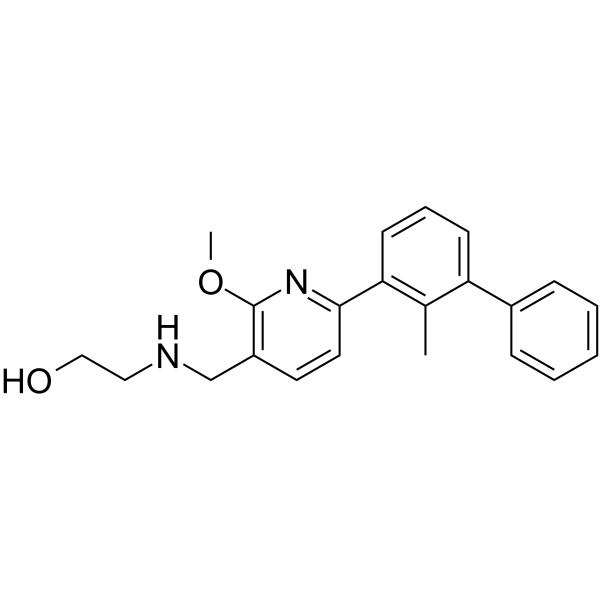
-
GC67694
PD-1/PD-L1-IN-9 hydrochloride
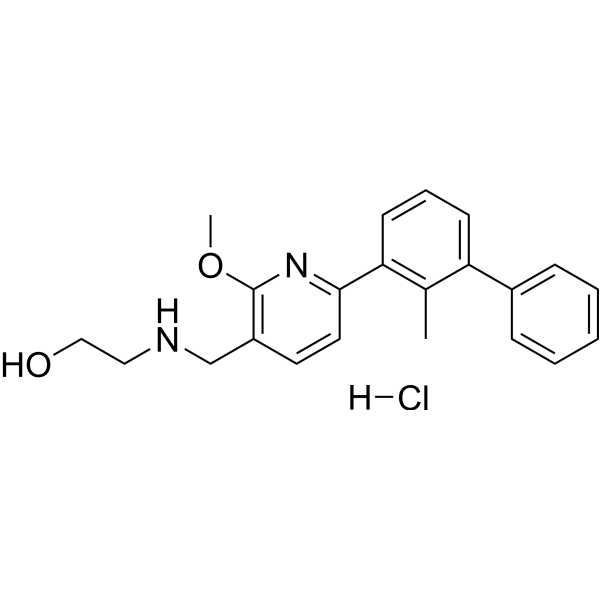
-
GC62502
PD-1/PD-L1-IN-NP19
PD-1/PD-L1-IN-NP19 is a PD-1/PD-L1 inhibitor, with an IC50 of 12.5 nM for human PD-1/PD-L1 interaction.
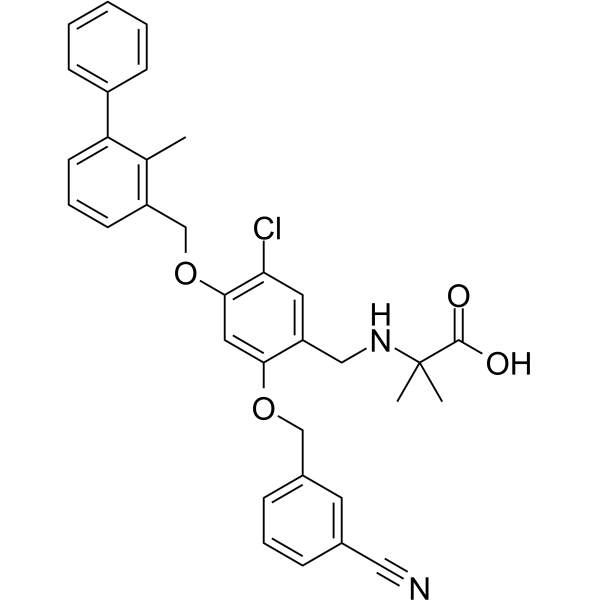
-
GC63984
PD-L1-IN-1
PD-L1-IN-1 is a potent PD-L1 inhibitor with an IC50 of 115 nM. PD-L1-IN-1 strongly binds with the PD-L1 protein and challenged it in a co-culture of PD-L1 expressing cancer cells (PC9 and HCC827 cells) and peripheral blood mononuclear cells enhanced antitumor immune activity of the latter. PD-L1-IN-1 significantly increased interferon γ release and apoptotic induction of cancer cells, with low cytotoxicity in healthy cells.
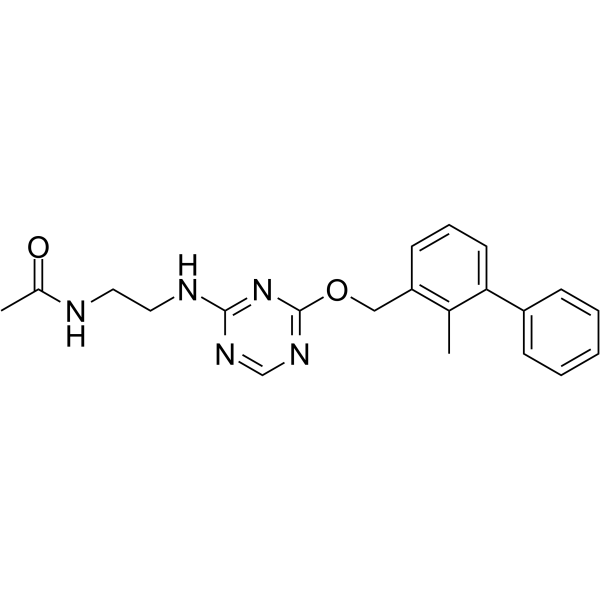
-
GC31878
PD1-IN-2
PD1-IN-2 is a PD1 signaling pathway inhibitor, which acts as an immunomodulator.
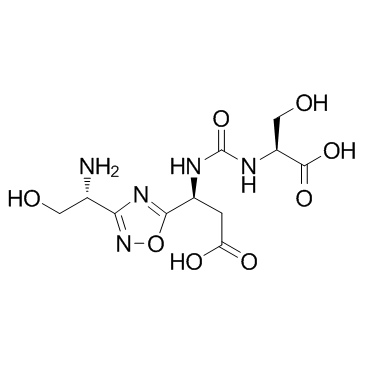
-
GC65920
PD1-PDL1-IN 1
PD1-PDL1-IN 1 is a potent programmed cell death 1 (PD-1) inhibitor. PD1-PDL1-IN 1 is useful as immune modulator.

-
GC69675
PD1-PDL1-IN 1 TFA
PD1-PDL1-IN 1 TFA (compound 16) is an effective inhibitor of programmed cell death 1 (PD-1). PD1-PDL1-IN 1 TFA can be used as an immunomodulatory agent.
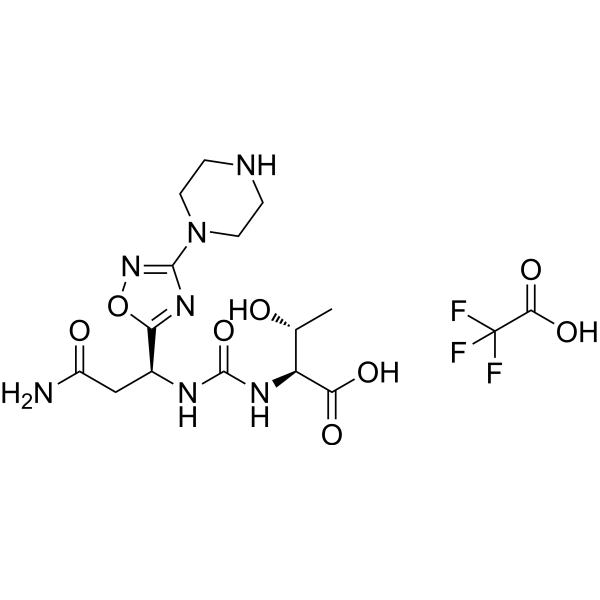
-
GC19531
Pembrolizumab
Pembrolizumab has demonstrated clinically significant anti-tumor activity with acceptable safety in patients with advanced solid cancers

-
GC66394
Penpulimab
Penpulimab is an IgG1 backbone anti-PD-1 monoclonal antibody with antitumor activities.

-
GC66378
Serplulimab
Serplulimab (HLX 10) is humanized monoclonal anti-PD-1 antibody. Serplulimab can be used in research of small cell lung cancer.

-
GC65290
Sintilimab
Sintilimab (IBI308) is a fully human IgG4 monoclonal antibody that binds to PD-1, thereby blocking the interaction of PD-1 with its ligands (PD-L1 and PL-L2) and consequently helping to restore the endogenous antitumour T-cell response.
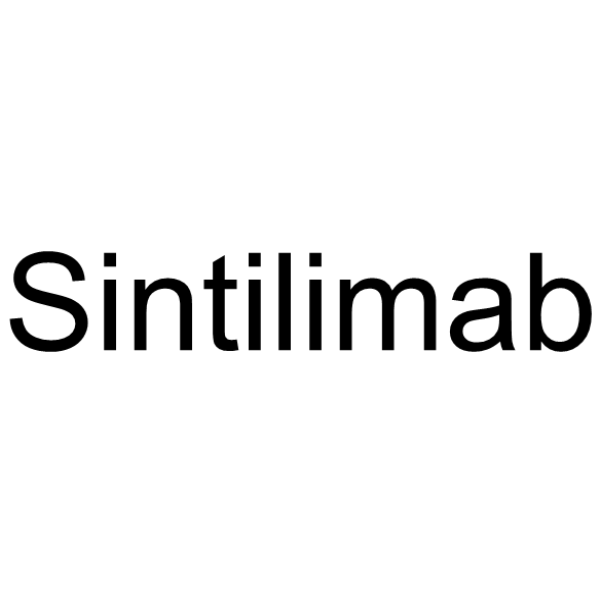
-
GC69934
Spartalizumab
Spartalizumab (PDR001) is a humanized monoclonal antibody that binds to PD-1 with high affinity and blocks its interaction with PD-L1 and PD-L2. It can be used for the study of anaplastic thyroid cancer (ATC).
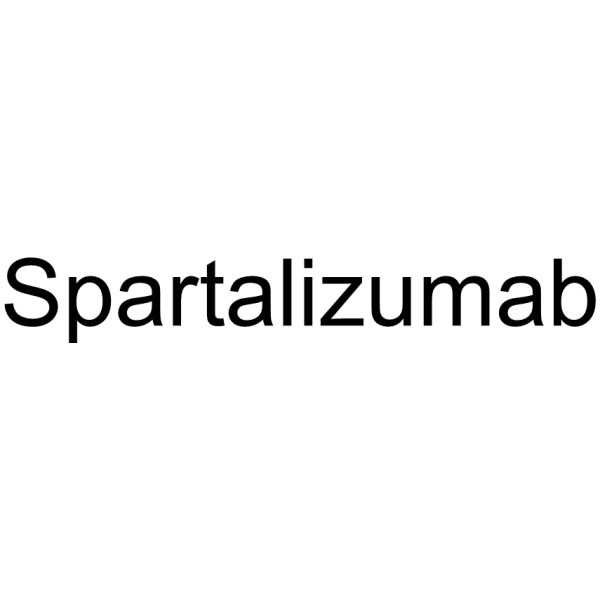
-
GC65580
Sugemalimab
Sugemalimab is a fully human, full length, anti-programmed death ligand 1 (PD-L1) immunoglobulin G4 (IgG4) monoclonal antibody (mAb). Sugemalimab shows anticancer activities and can be used for non-small cell lung cancer research.

-
GC10469
Sulfamethoxypyridazine
long-acting sulfonamide antibiotic

-
GC65033
Tislelizumab
Tislelizumab, a monoclonal antibody with high binding affinity to the PD-1 receptor, minimizes Fcγ receptor binding on macrophages, thereby abrogating antibody-dependent phagocytosis, a mechanism of T cell clearance and potential resistance to anti-PD-1 therapy.

-
GC19131
Tomivosertib
eFT508 is a potent, highly selective, and orally bioavailable MNK1 and MNK2 inhibitor, with IC50s of 1-2 nM against both isoforms.
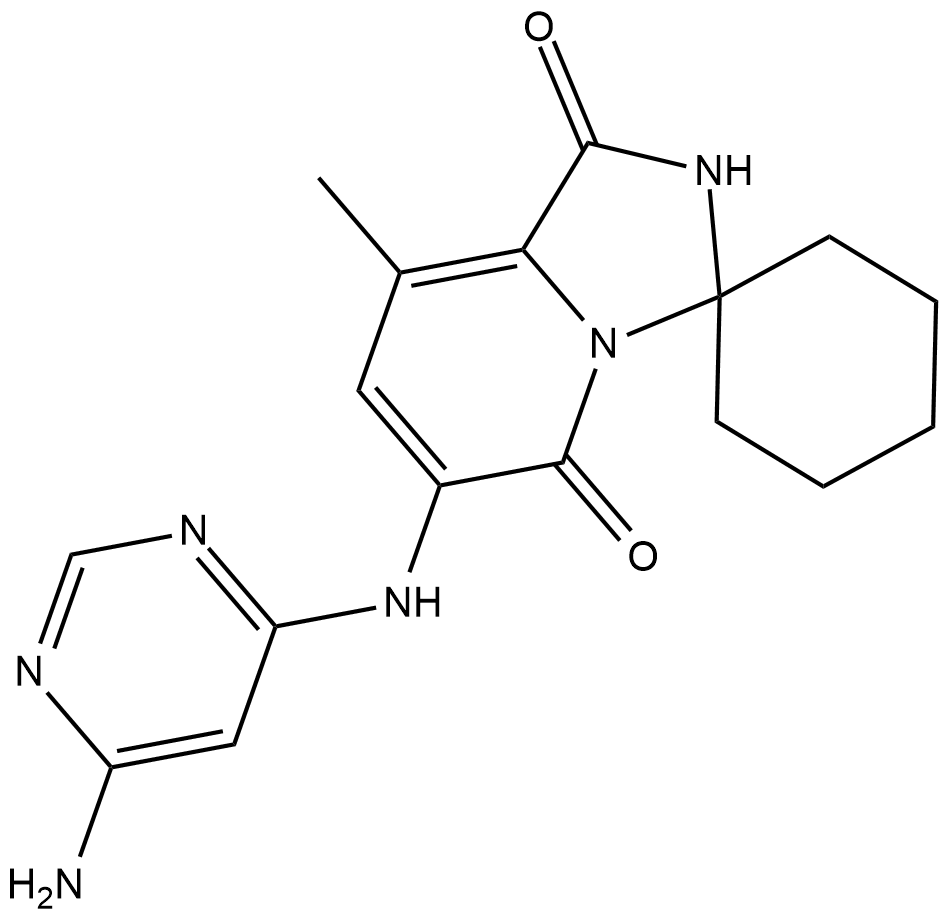
-
GC64561
Toripalimab
Toripalimab is the first domestic anti-tumor PD-1 antibody in China. Toripalimab is a selective, recombinant, humanized monoclonal antibody against PD-1. Toripalimab is able to bind to PD-1 and block the interaction with its ligands. Toripalimab has exhibited primary anti-tumor effects in tumors such as melanoma, lung cancer, digestive tract tumors, hepatobiliary and pancreatic tumors, neuroendocrine neoplasms, nasopharyngeal carcinoma and urothelial carcinoma.
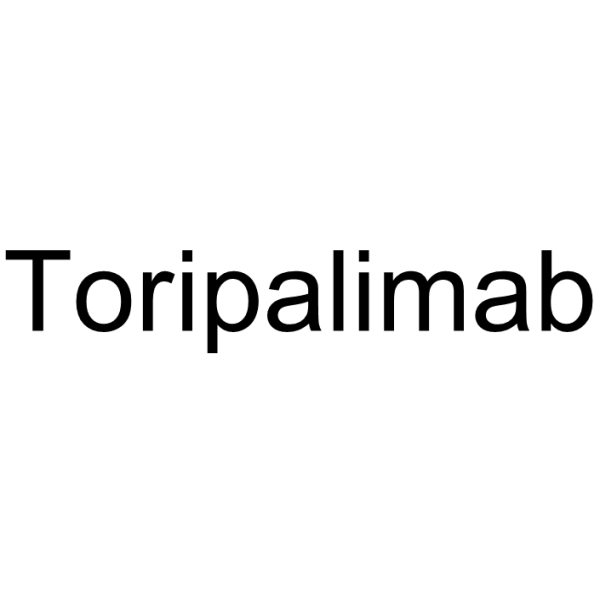
-
GC61946
TPP-1
TPP-1 is a potent inhibitor of the?PD-1/PD-L1 interaction. TPP-1 binds specifically to PD-L1 with a high affinity (KD=95 nM). TPP-1 inhibits human tumor growth in vivo via reactivating T-cell function.
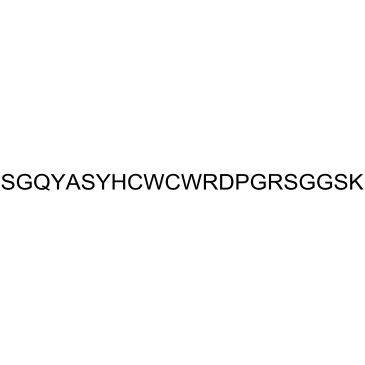
-
GC70137
Vudalimab
Vudalimab is an effective PD-1 and CTLA-4 dual inhibitor, which is a fully humanized bispecific monoclonal antibody. Vudalimab targets the immune checkpoint receptors PD-1 and CTLA-4, promoting selective T cell activation against tumors.

-
GC70145
WL12
WL12 is a specific targeted programmatic death ligand 1 (PD-L1) binding peptide. WL12 can be radiolabeled with different radioactive isotopes to produce a radiotracer for evaluating the expression of PD-L1 in tumors.



